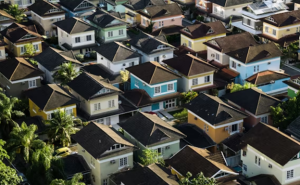Your home’s siding is more than just a decorative element; it’s a vital barrier that shields your home from the elements. Over time, exposure to wind, rain, sunlight, and fluctuating temperatures can take a toll on even the most durable materials. If damage goes unnoticed, it can lead to serious structural and energy-efficiency issues. That’s why investing in professional siding repair in Dayton is essential when warning signs begin to appear. Prompt attention to siding issues can prevent more costly repairs and protect the property’s value.
Recognizing these signs early allows homeowners to act before problems worsen. Below are some of the most common indicators that your siding needs immediate attention.
Cracks, Warping, and Visible Damage
Physical damage is the most obvious and urgent sign. Cracks, holes, bulging panels, or warped boards often mean your siding is no longer creating a weather-tight seal. These openings allow water, pests, and air to penetrate the outer shell of your home, leading to interior damage, mold, and even structural decay.
In such cases, understanding the timely siding repair benefits becomes clear. Acting fast not only prevents damage from spreading but also restores your home’s protective envelope. Minor repairs now can save you from major reconstruction later.
Peeling Paint and Fading Color
If your siding paint is peeling or the color has dramatically faded, it may indicate underlying moisture problems or material deterioration. Quality siding should maintain its appearance for years. Frequent repainting or discoloration may mean the material is failing or water is seeping into the layers beneath.
This type of wear affects more than curb appeal; it suggests that the siding is no longer providing proper insulation or moisture control, both of which are essential for your home’s durability.
Unexplained Rise in Energy Bills
One of the less visible, but highly impactful, signs of siding issues is a sudden increase in energy bills. Damaged siding often leads to poor insulation, allowing hot or cold air to escape more easily. When this happens, your HVAC system works harder to maintain comfortable indoor temperatures, causing your energy usage to spike.
If other parts of your home have already been checked and ruled out, it’s worth investigating the condition of your siding as a contributing factor to the problem.
Mold, Mildew, and Rot
Dark streaks, green spots, or a musty odor can be signs of trapped moisture behind your siding. Over time, this can result in mold, mildew, or even rotting materials. These issues not only compromise your home’s structure but can also impact your health.
When visible signs of moisture damage are present, it’s time to evaluate whether siding repair or replacement is the best course of action. In many cases, early intervention can prevent the need for complete replacement, saving time and money.
Conclusion
Your home’s siding protects everything inside it, from structural supports to energy systems. Ignoring the signs of damage can lead to larger problems that affect your wallet and your living conditions. By identifying issues early, whether it’s warping, mold, or energy inefficiency, you can take swift action to extend the life of your siding and improve your home’s comfort and value. Prioritizing professional siding repairs ensures your home stays strong, efficient, and attractive for years to come.



